Abstract
The addition of abscisic acid to barley (Hordeum vulgare L. cv. Himalaya) aleurone layers at the same time as gibberellic acid completely prevents the gibberellin-induced increases in the percentage of polysomes, the formation of polyribosomes, and the synthesis of α-amylase, even when the molar concentration of gibberellic acid is four times greater than the concentration of abscisic acid. The addition of abscisic acid to aleurone cells producing α-amylase (midcourse addition) inhibits the further synthesis of α-amylase and decreases the percentage of polysomes but does not change the number of ribosomes per cell.
The removal of gibberellic acid from aleurone layers during the midcourse of α-amylase production arrests α-amylase synthesis and decreases the percentage of polysomes. Readdition of gibberellic acid causes the reinitiation of the synthesis of α-amylase and a return of the percentage of polysomes to the original level.
The incubation of aleurone layers with 5-fluorouracil inhibits the secretion of α-amylase. The changes in polysomes isolated from cells treated with either fluorouracil or actinomycin D correlate with the changes in enzyme synthesis caused by the addition of these inhibitors.
Gibberellic acid and abscisic acid affect both the conversion of monosomes to polysomes and the synthesis of new ribosomes. The gibberellin-stimulated increases in the number of ribosomes and the percentage of polysomes are probably a prerequisite for the hormone induction of enzyme synthesis.
Full text
PDF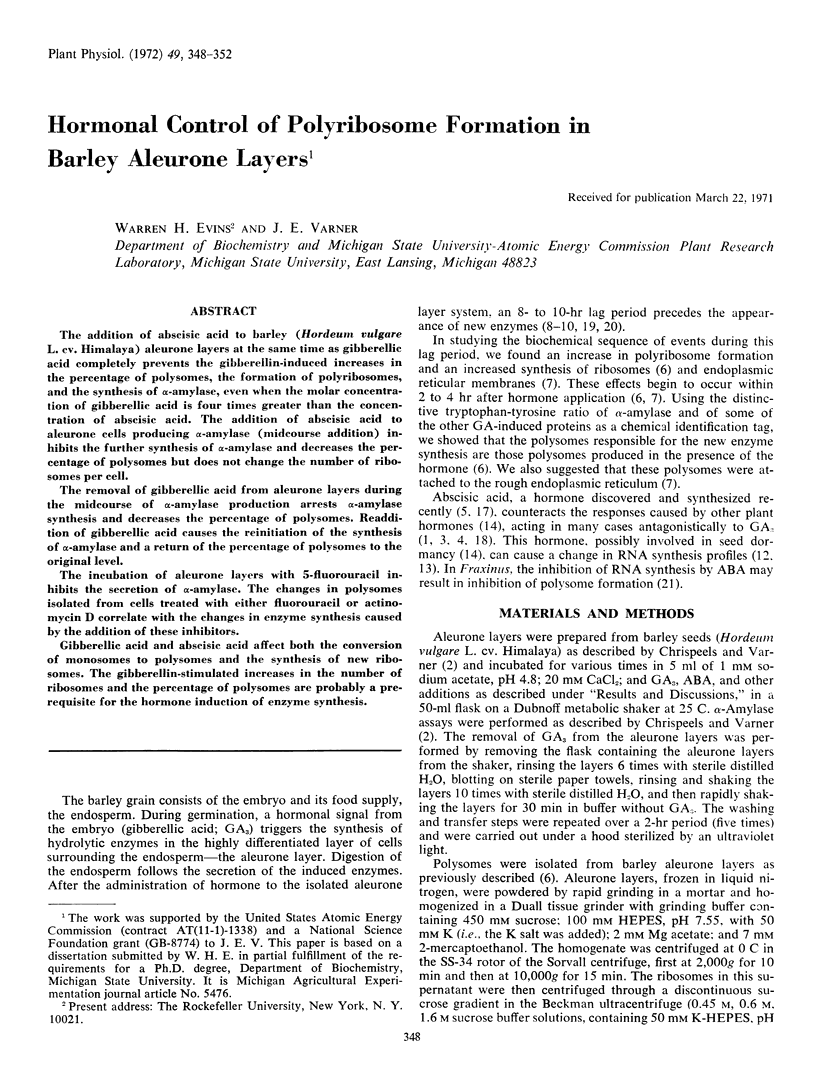
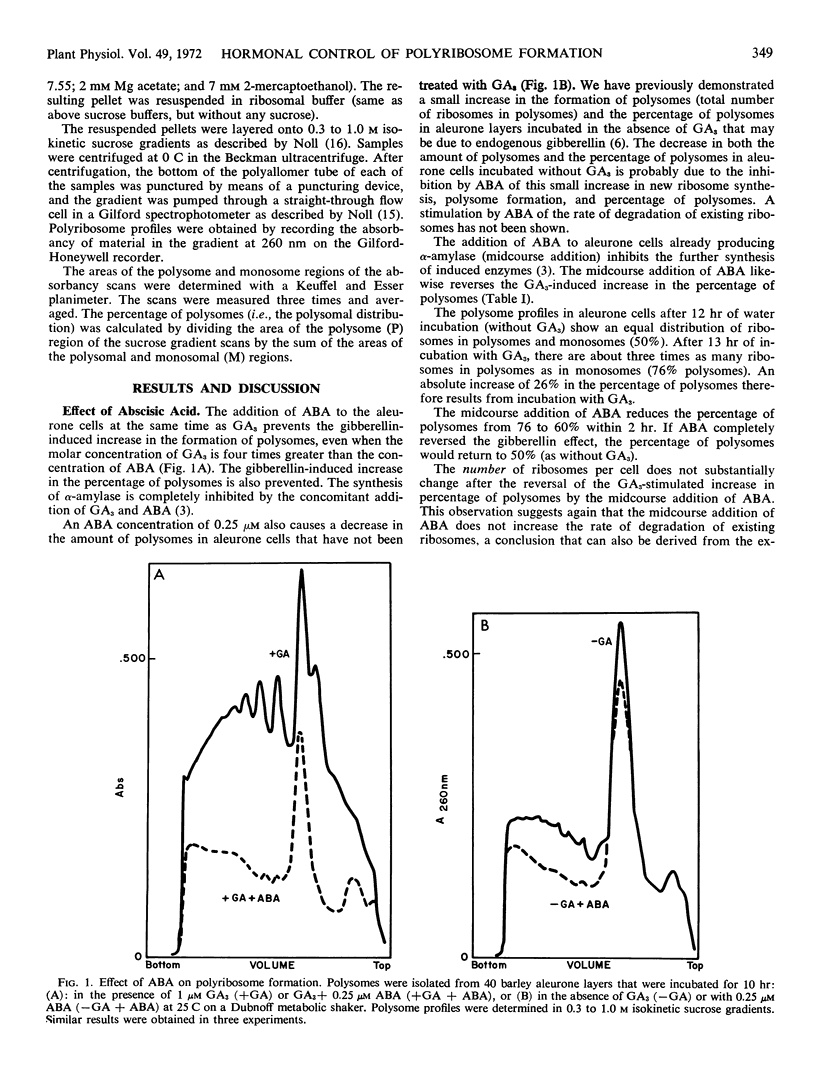
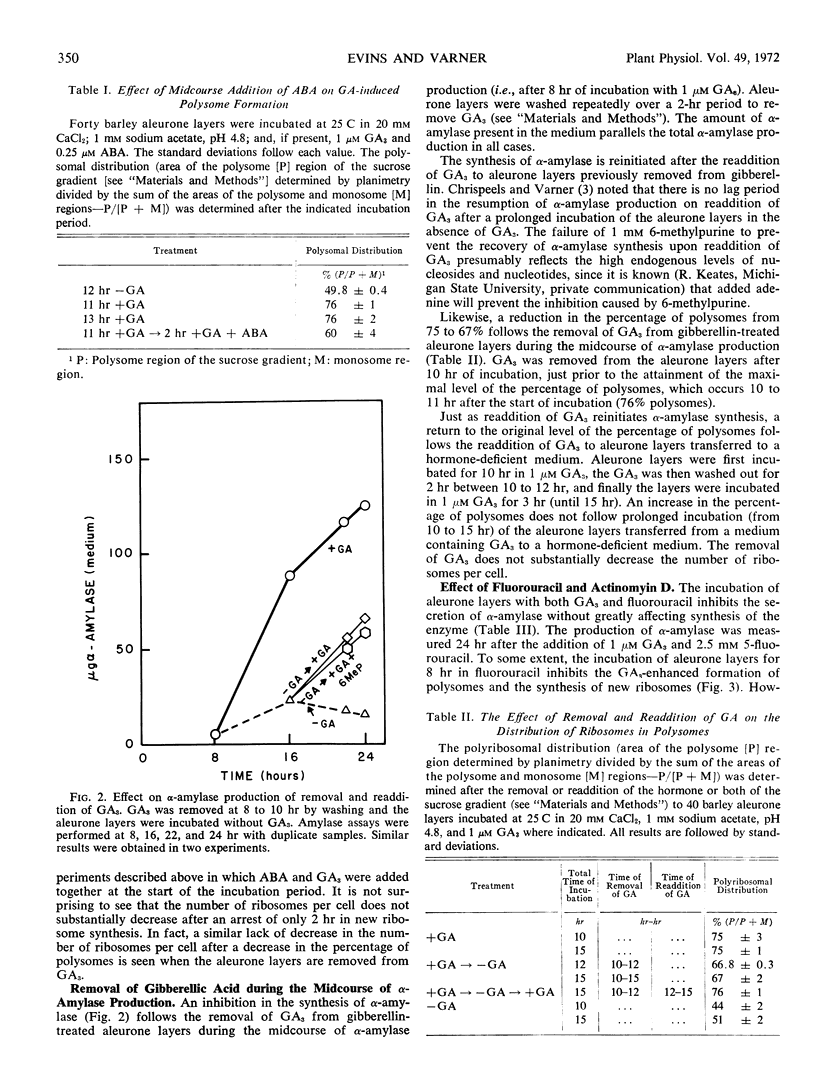
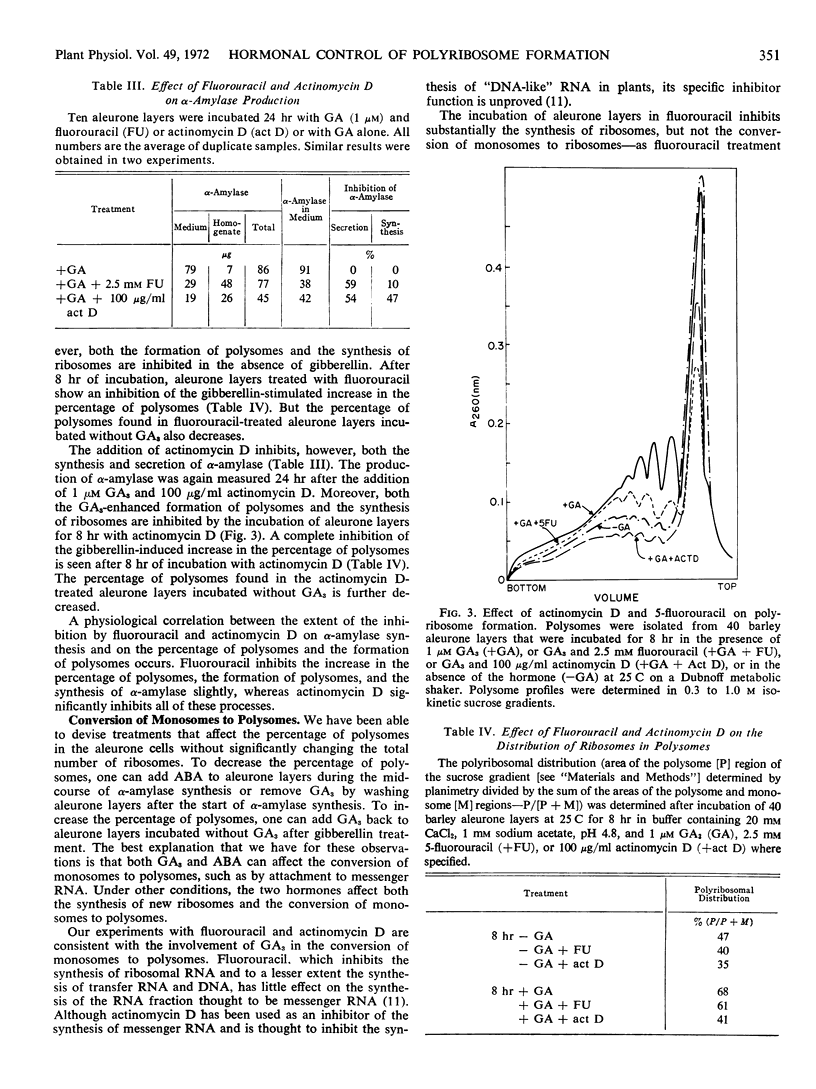
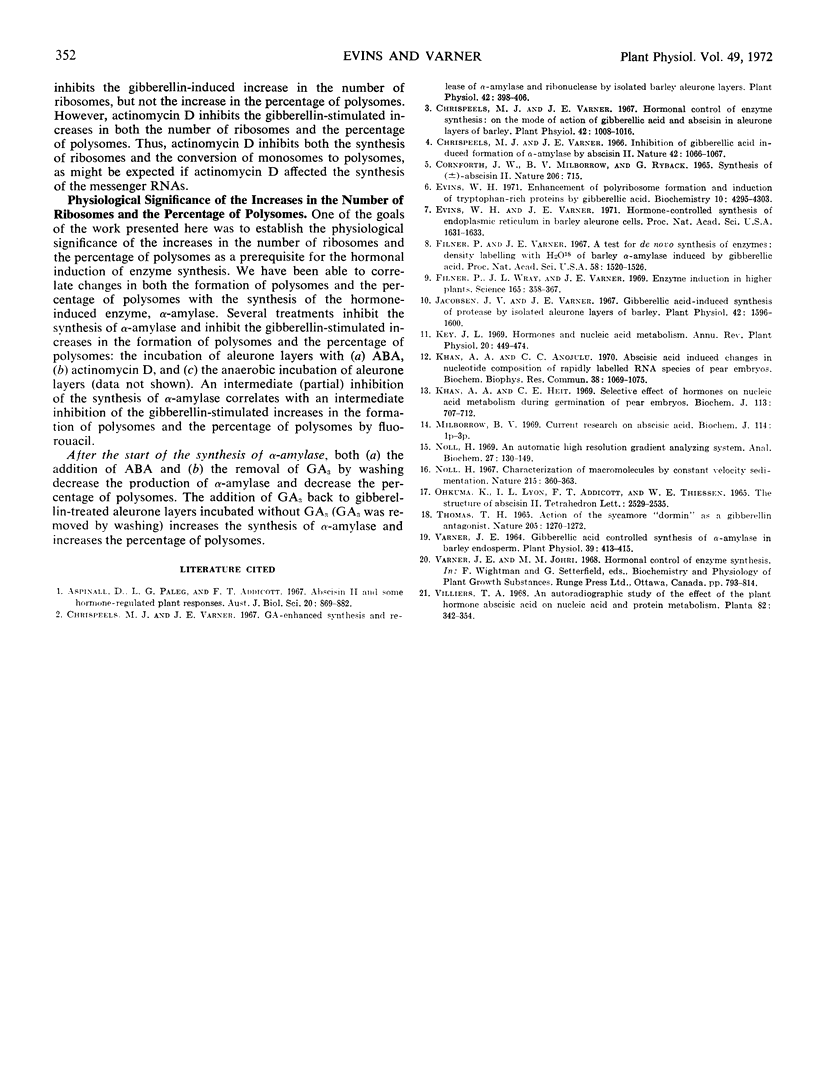
Selected References
These references are in PubMed. This may not be the complete list of references from this article.
- Chrispeels M. J., Varner J. E. Gibberellic Acid-enhanced synthesis and release of alpha-amylase and ribonuclease by isolated barley and aleurone layers. Plant Physiol. 1967 Mar;42(3):398–406. doi: 10.1104/pp.42.3.398. [DOI] [PMC free article] [PubMed] [Google Scholar]
- Chrispeels M. J., Varner J. E. Hormonal control of enzyme synthesis: on the mode of action of gibberellic Acid and abscisin in aleurone layers of barley. Plant Physiol. 1967 Jul;42(7):1008–1016. doi: 10.1104/pp.42.7.1008. [DOI] [PMC free article] [PubMed] [Google Scholar]
- Evins W. H., Varner J. E. Hormone-controlled synthesis of endoplasmic reticulum in barley aleurone cells. Proc Natl Acad Sci U S A. 1971 Jul;68(7):1631–1633. doi: 10.1073/pnas.68.7.1631. [DOI] [PMC free article] [PubMed] [Google Scholar]
- Filner P., Varner J. E. A test for de novo synthesis of enzymes: density labeling with H2O18 of barley alpha-amylase induced by gibberellic acid. Proc Natl Acad Sci U S A. 1967 Oct;58(4):1520–1526. doi: 10.1073/pnas.58.4.1520. [DOI] [PMC free article] [PubMed] [Google Scholar]
- Filner P., Varner J. E., Wray J. L. Environmental or developmental changes cause many enzyme activities of higher plants to rise or fall. Science. 1969 Jul 25;165(3891):358–367. doi: 10.1126/science.165.3891.358. [DOI] [PubMed] [Google Scholar]
- Khan A. A., Heit C. E. Selective effect of hormones on nucleic acid metabolism during germination of pear embryos. Biochem J. 1969 Jul;113(4):707–712. doi: 10.1042/bj1130707. [DOI] [PMC free article] [PubMed] [Google Scholar]
- Noll H. An automatic high-resolution gradient analyzing system. Anal Biochem. 1969 Jan;27(1):130–149. doi: 10.1016/0003-2697(69)90225-5. [DOI] [PubMed] [Google Scholar]
- Noll H. Characterization of macromolecules by constant velocity sedimentation. Nature. 1967 Jul 22;215(5099):360–363. doi: 10.1038/215360a0. [DOI] [PubMed] [Google Scholar]
- Varner J. E. Gibberellic Acid Controlled Synthesis of alpha-Amylase in Barley Endosperm. Plant Physiol. 1964 May;39(3):413–415. doi: 10.1104/pp.39.3.413. [DOI] [PMC free article] [PubMed] [Google Scholar]


